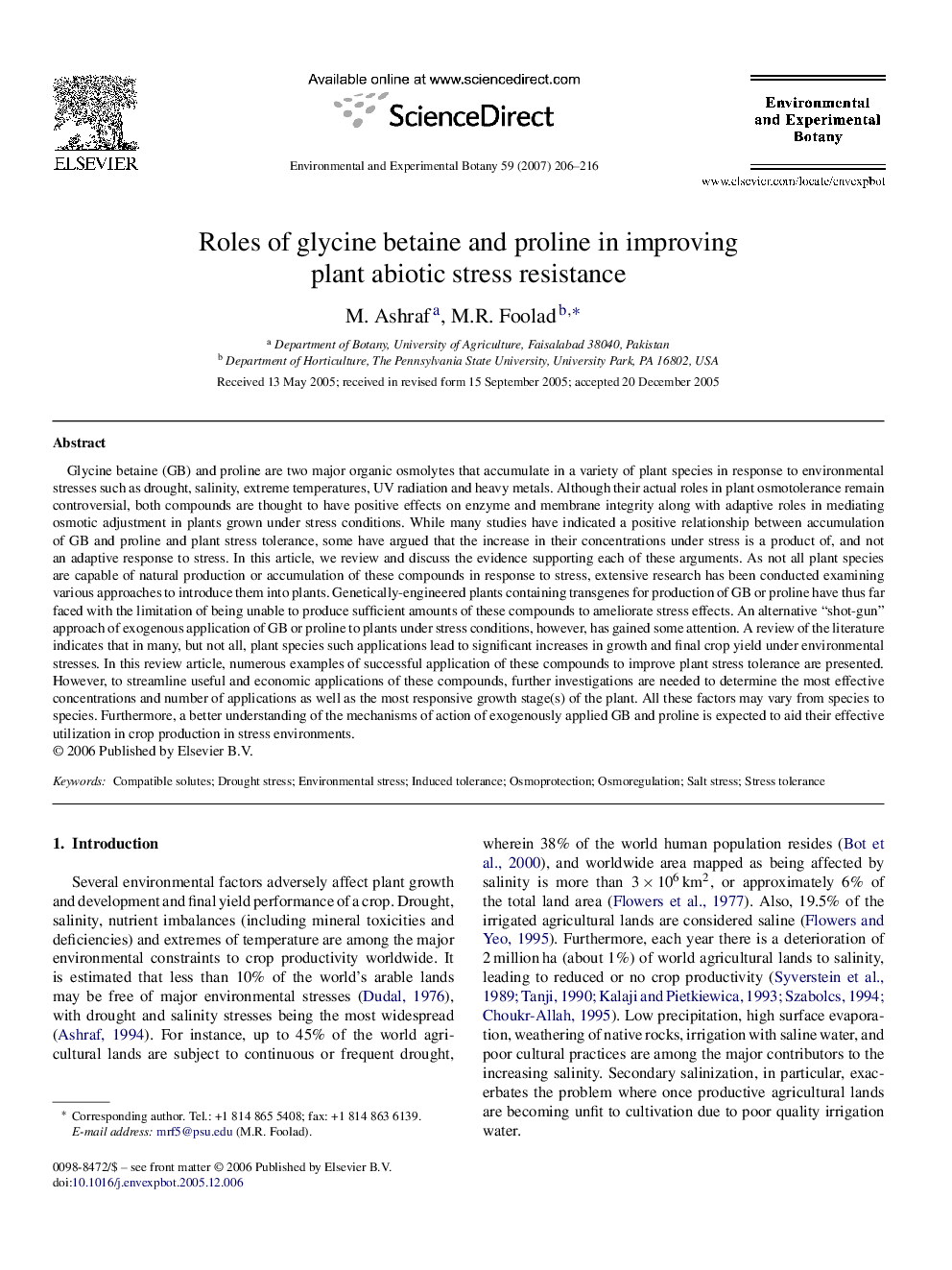| کد مقاله | کد نشریه | سال انتشار | مقاله انگلیسی | نسخه تمام متن |
|---|---|---|---|---|
| 4555723 | 1329277 | 2007 | 11 صفحه PDF | دانلود رایگان |

Glycine betaine (GB) and proline are two major organic osmolytes that accumulate in a variety of plant species in response to environmental stresses such as drought, salinity, extreme temperatures, UV radiation and heavy metals. Although their actual roles in plant osmotolerance remain controversial, both compounds are thought to have positive effects on enzyme and membrane integrity along with adaptive roles in mediating osmotic adjustment in plants grown under stress conditions. While many studies have indicated a positive relationship between accumulation of GB and proline and plant stress tolerance, some have argued that the increase in their concentrations under stress is a product of, and not an adaptive response to stress. In this article, we review and discuss the evidence supporting each of these arguments. As not all plant species are capable of natural production or accumulation of these compounds in response to stress, extensive research has been conducted examining various approaches to introduce them into plants. Genetically-engineered plants containing transgenes for production of GB or proline have thus far faced with the limitation of being unable to produce sufficient amounts of these compounds to ameliorate stress effects. An alternative “shot-gun” approach of exogenous application of GB or proline to plants under stress conditions, however, has gained some attention. A review of the literature indicates that in many, but not all, plant species such applications lead to significant increases in growth and final crop yield under environmental stresses. In this review article, numerous examples of successful application of these compounds to improve plant stress tolerance are presented. However, to streamline useful and economic applications of these compounds, further investigations are needed to determine the most effective concentrations and number of applications as well as the most responsive growth stage(s) of the plant. All these factors may vary from species to species. Furthermore, a better understanding of the mechanisms of action of exogenously applied GB and proline is expected to aid their effective utilization in crop production in stress environments.
Journal: Environmental and Experimental Botany - Volume 59, Issue 2, March 2007, Pages 206–216